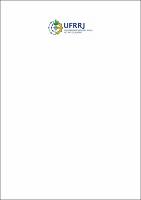Use este identificador para citar ou linkar para este item:
http://rima110.im.ufrrj.br:8080/jspui/handle/20.500.14407/15050| metadata.dc.type: | Dissertação |
| Título: | Estudo da função quadrática no GeoGebra: análise em uma turma de jovens e adultos |
| Título(s) alternativo(s): | Study of the quadratic function in GeoGebra: analysis in a class of youths and adults |
| metadata.dc.creator: | Lacerda, Arlen Pinheiro de |
| metadata.dc.contributor.advisor1: | Bairral, Marcelo Almeida |
| metadata.dc.contributor.referee1: | Bairral, Marcelo Almeida |
| metadata.dc.contributor.referee2: | Powell, Arthur Belford |
| metadata.dc.contributor.referee3: | Pinto, Gisela Maria da Fonseca |
| metadata.dc.description.resumo: | Esta dissertação teve como objetivo explorar a potencialidade do GeoGebra para a aprendizagem de aspectos conceituais envolvidos no estudo da Função Quadrática. A intervenção pedagógica ocorreu em uma turma de EJA no CIEP 055 João Gregório Galindo, localizado em Angra dos Reis/RJ. A inovação foi realizada na própria prática docente e insere-se em um contexto no qual os alunos não tiveram oportunidade de seguir os estudos de forma regular, com idade e série indicada. Como formas de coleta de dados foram usados: diários de campo do professor-pesquisador, respostas dadas pelos participantes para as atividades, captura de telas, gravação em vídeo, registros fotográficos. As atividades foram elaboradas visando explorar e analisar relações entre coeficientes, discriminante, raízes e vértice da parábola. A fundamentação teórica pautou-se na abordagem instrumental, particularmente, na elucidação de relações entre os quatros polos (sujeitos, objeto, instrumento e outros sujeitos) do modelo das situações de atividades coletivas instrumentadas. A análise indica que a gênese instrumental pode ser uma ferramenta adequada para aprender o processo cognitivo de sujeitos estudando a função quadrática, pois desenvolveu novos esquemas de utilização que permitiram resolver as situações propostas. Especificamente, o uso do GeoGebra para estudar as funções quadráticas favoreceu a sua transformação de artefato em instrumento. Ou seja, a possibilidade de observar e analisar a representação gráfica da função quadrática, isto é a transformação do GeoGebra de artefato em instrumento. Como produto educacional a investigação gerou um caderno de atividades como GeoGebra para análise de relações entre coeficientes, discriminante, raízes e vértice de uma parábola. |
| Resumo: | This dissertation aimed to explore the potential of GeoGebra to learn the conceptual aspects involved in the study of the Quadratic Function. The pedagogical intervention occurred in an EJA class at CIEP 055 Joao Gregorio Galindo, located in Angra dos Reis (RJ). The innovation was carried out in the teaching practice itself and is inserted in a context in which the students did not have the opportunity to follow the studies in a regular way, with age and indicated series. As forms of data collection were used: teacher-researcher field diaries, responses to activities, screen capture, video recording, photographic records. The activities were elaborated to explore and analyze relations between coefficients, discriminant, roots and vertex of the parabola. The theoretical basis was based on the instrumental approach, particularly in the elucidation of relations between the four poles (subjects, object, instrument and other subjects) of the model of situations of collective activities implemented. The analysis indicates that instrumental genesis can be an adequate tool to study the cognitive process of subjects by studying the quadratic function, since it has developed new schemes of use that allowed it to solve the proposed situations. Particularly to the study of the quadratic function it is emphasized that the analyzed activity, in which GeoGebra was used, favored the transformation from artifact to instrument. That is, the possibility of observing the representation of the graph of the quadratic function in this environment of allowed dynamic geometry, in a way, to validate the previous knowledge of the students. As an educational product the research generated a workbook that aimed to explore the potential of GeoGebra to learn the conceptual aspects involved in the study of the Quadratic Function. |
| Palavras-chave: | Função quadrática Gênese instrumental GeoGebra EJA Quadratic function Genesis instrumental |
| metadata.dc.subject.cnpq: | Matemática Educação |
| metadata.dc.language: | por |
| metadata.dc.publisher.country: | Brasil |
| Editor: | Universidade Federal Rural do Rio de Janeiro |
| metadata.dc.publisher.initials: | UFRRJ |
| metadata.dc.publisher.department: | Instituto de Educação |
| metadata.dc.publisher.program: | Programa de Pós-Graduação em Educação em Ciências e Matemática |
| Citação: | LACERDA, Arlen Pinheiro de. Estudo da função quadrática no GeoGebra: análise em uma turma de jovens e adultos, 2019. 95 f. Dissertação (Mestrado em Educação em Ciências e Matemática) - Instituto de Educação, Universidade Federal Rural do Rio de Janeiro, Seropédica, 2019. |
| metadata.dc.rights: | Acesso Aberto |
| URI: | https://rima.ufrrj.br/jspui/handle/20.500.14407/15050 |
| Data do documento: | 27-Mar-2019 |
| Aparece nas coleções: | Mestrado Profissional em Educação em Ciências e Matemática |
Se for cadastrado no RIMA, poderá receber informações por email.
Se ainda não tem uma conta, cadastre-se aqui!
Arquivos associados a este item:
| Arquivo | Descrição | Tamanho | Formato | |
|---|---|---|---|---|
| 2019 - Arlen Pinheiro de Lacerda.pdf | 2019 - Arlen Pinheiro de Lacerda | 2.25 MB | Adobe PDF |  Abrir |
Os itens no repositório estão protegidos por copyright, com todos os direitos reservados, salvo quando é indicado o contrário.

